Museum Storage Furniture Solutions
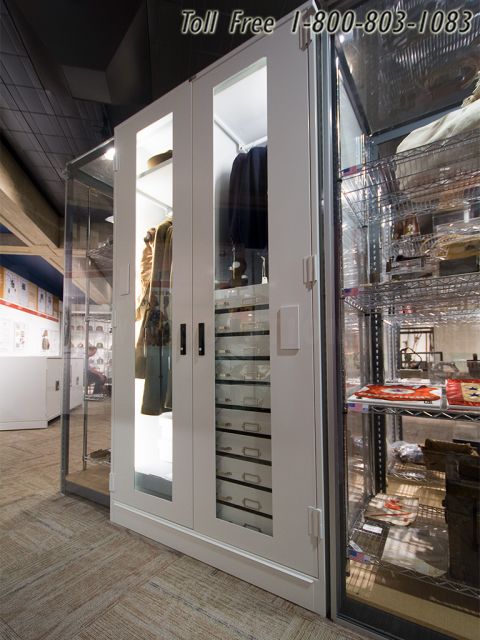
It doesn’t matter where an object is in a museum; it’s always in a state of storage. That could mean the object is on display on museum shelves, grouped in a time capsule, or boxed in a storage room. Preparing items for storage takes a significant amount of care and planning to prevent deterioration.
Museum storage furniture doesn’t have to be difficult to access or stored in a hidden area containing rarely used items. Instead, think of these storage areas as temporary places where workers can house items until they need them in the future.
Types of Drawers and Trays for Museums
One of the most critical aspects of museum efficiency is organization. Incorporating museum cabinets and shelving into the building’s design conserves, preserves, and protects artifacts and specimens. One of the best ways for maximizing storage in limited space is by using the right museum storage furniture.
There are two primary ways to store items in a museum, including:
- 4-post shelving: This type of museum shelving uses four posts to create static storage areas. This type of museum shelving is ideal for books, files, supplies, and more.
- Museum cabinets: These systems include flat drawers that pull-out using gliding extensions. They include double-hinge doors and removable trays.
These two primary ways break down further into the following museum storage solutions:
- Painting and artwork storage racks
- Garment and costume storage racks
- Large bulk storage racks
- Entomology storage cabinets
- Herbarium and botany storage cabinets
- Flat file storage cabinets
- Archival box storage shelving
Why Museums Should Use Drawers and Trays
Just like every museum collection is different, so are the risks they face. These risks typically fall within ten categories. It isn’t uncommon to hear these categories as the “Ten Agents of Decay.” Understanding these categories help museum workers mitigate the effects of these factors when incorporating museum storage solutions.
Incorporating museum storage drawers and trays helps fight against the Ten Agents of Decay, which include:
- Fire: When items come into contact with fire and smoke, that causes irreversible damage. More often than not, that results in a total loss.
- Inadequate security: If the museum is in a high-risk area, then its storage collection could experience damage from theft or vandalism in unlocked, unsupervised, or unsecured rooms.
- Incorrect relative humidity: If items have exposure to extremely dry or humid conditions, that could cause irreversible damage. If the conditions are too humid, that could cause mold or rust to form. If they’re too dry, that could cause brittleness on film, paper, and other materials.
- Incorrect temperature: Deterioration can occur when items are in storage areas that are too hot because that heat accelerates chemical reactions. Long-term museum storage should occur in colder temperatures.
- Light: All record formats can experience damage in artificial and natural light. For example, the light source could cause the fading of dyes and pigments.
- Physical forces: Damage from physical forces can include anything from a human error to natural disasters. Examples of human errors include dropping or tearing items. Examples of natural disasters include damage occurring from an earthquake or hurricane.
- Pests: Fungi, insects, mold, and rodents are common pest control issues when protecting museum storage.
- Pollutants: Museum collections might come into contact with pollutants through the air or from direct contact. This contact could occur inside or outside of the building. For example, dust, fibers, or soot could cause damage to collections.
- Poor material handling: It isn’t uncommon for records to experience damage due to improper handling or storage. For example, the film can experience damage from oily fingers, or film reels could experience damage from careless storage.
- Water: Floods and leaks can cause irreversible damage to records, causing dyes and inks to run and stain, pages to warp, or mold to form.
The more museum workers understand these external links, the better they can equip storage areas with the best drawers, shelves, and trays. Here are some additional reasons why museums should incorporate museum shelves, drawers, and trays into their museum storage solutions:
- Focus on versatility: Workers can prepare for the future and protect the past with museum shelving, drawers, and trays.
- Identify collection needs: No two museum collection is the same, so it’s critical to build a storage solution around the current, future, and past collections.
- Space optimization: As collections grow, space limitations occur. That results in less-than-optimal conditions for museum collections. Storage solutions help optimize and maximize space.
Benefits and Features of Museum Shelving and Cabinets
The items coming into a museum need several different types of storage solutions. Incorporating a variety of museum shelving and cabinets allows curators to store items in many shapes and sizes. These storage solutions mean that museums can store various maps, paintings, prints, and odd-shaped items seamlessly.
Additional benefits include:
- These systems save a considerable amount of floor space.
- Collections receive the protection they need.
- Curators can organize collections seamlessly.
Curators must look for museum storage solutions that aim to preserve artifacts and specimens. These storage solutions should include features that control humidity and temperature and fire, light, and water.
Additional benefits include:
- Expanded access: As a museum’s collection continues growing, it needs space and access to expand. Museum shelving and cabinets are expandable.
- Safety: These storage solutions preserve and protect objects from accidental bumps and other external forces.
- Storage versatility: Archeological storage, books and literature, fine artwork, geoscience, parchments, and rare textiles receive the protection they need.
Technical Specifications and Design
As museum collections continue growing, so are the needs to develop better materials handling and storage solutions. It isn’t uncommon for companies, including museums, to have in-house engineering teams. Architects and designers use their expertise to provide innovative museum storage solutions.
General Technical Specifications:
- Air circulation to prevent mold growth
- Anti-bacterial and flame retardant finishes
- Space-saving and maximum storage capacity designs
- Optional glass doors to view the contents of the storage cabinet
Museum Storage Solutions
It isn’t unusual for museums to have storage capacity issues. That leads to issues regarding efficiency and disorganization. Implementation of storage shelving, cabinets, and drawers helps prevent deterioration while simultaneously maximizing museum storage. The technical specifications for each museum storage solution vary according to height, storage, capacity, weight, and more. Here are a couple of examples:
 See Museum Storage Solutions Prices
See Museum Storage Solutions Prices
See Museum storage shelving, racks, & cabinets prices
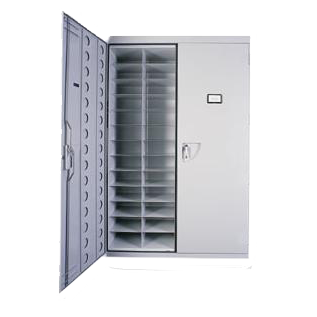
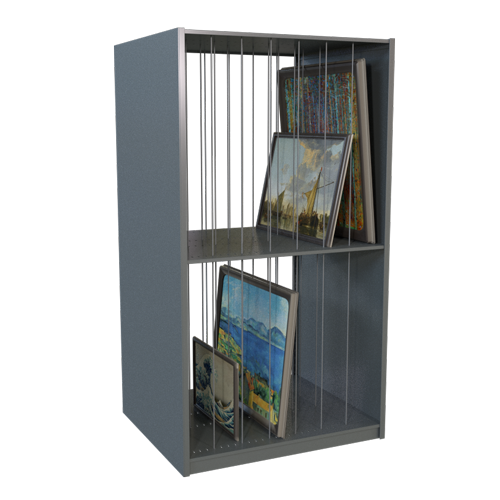
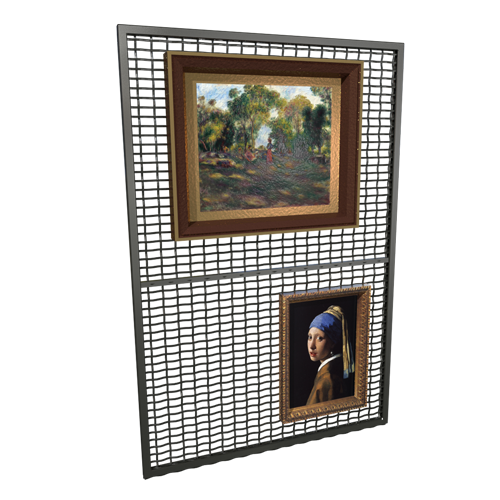
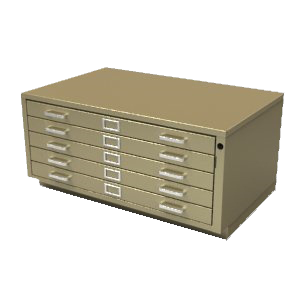
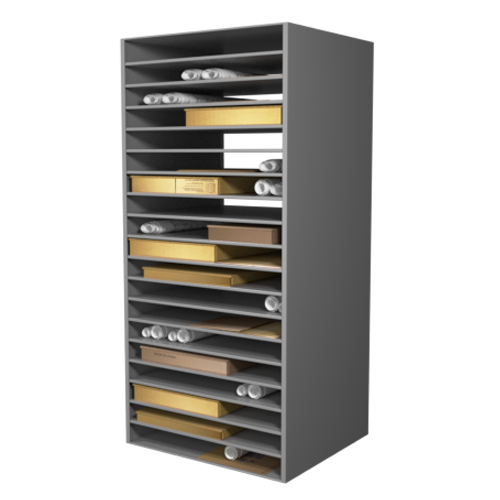
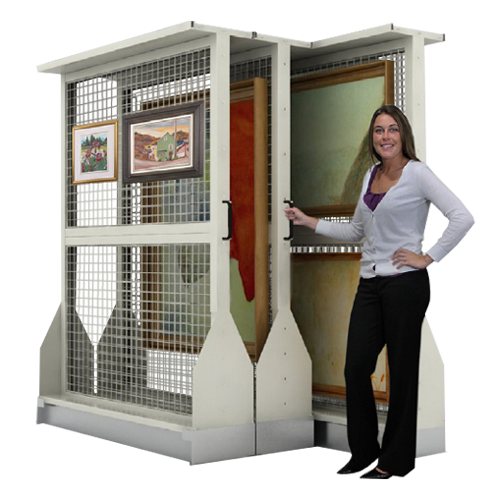
Model: Full-Height Museum Cabinet with Five Adjustable Shelves: #SMS-67-SWSFC3918SD5S
- 100% non-off-gassing silicone gaskets
- 12-gauge steel base
- 16-gauge steel adjustable support rails for shelves
- 18-gauge steel doors, tops, bottoms, and backs
- 18-gauge welded steel tray construction
- All-welded heavy-duty steel construction
- Dimensions: 42″ Wide x 24″ Deep x 84″ High
- Locking compression handles
- Shelves and trays adjust on 3/4″ centers
- Shelving construction: 18-gauge steel with 20-gauge steel reinforcements
- Weight: 445 Lbs.
Model: Sliding Box Storage (Four Post) Racks: #SMS-25-B021BX4P6
- 18-gauge steel uprights
- Dimensions: 5’4″ Wide x 2’10-1/2″ Deep x 6’9-3/4″ High
- Heavy-duty carriages
- Leveling rack
- Opening: 6 Openings
- Powder-coated finish
- Shelves adjust on 1-1/2″ increments
- Shelves hold up to 250 pounds
- Specially-engineered rubber stops
- Type: Box Size (16″ Deep) Shelving
- Weight: 615 Lbs.
When museums have expert designers on-staff, they can integrate museum storage solutions into existing building plans and designs. Implementing museum cabinets and other storage solutions into an existing building design involves several architectural and design phases.
Architectural and design phases:
- Spec creation after a thorough site evaluation
- Presentation of plans following CAD drawings
- Integration of the project with existing storage solutions
- Installation of museum cabinets, drawers, and shelving
Contact Us for Museum Storage Furniture
Southwest Solutions Group® is an innovative design and installation leader for museum storage systems. Reach out to one of our expert design professionals by calling us at 1-800-803-1083 or send us a message. We’ll help you decide which museum storage solution is best for your artifacts and specimens.
Resources
Museum Testimonials
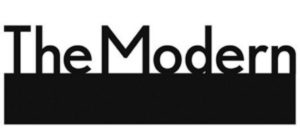
“I want to thank your entire team for the outstanding work on our art storage project. The process from beginning to end was smooth and enjoyable, and the finished room looks terrific! Chester, Bryan, Chris, Chris, and the other members were extremely thorough and a pleasure to work with. They followed our house rules and took our direction very well. Thanks again for an outstanding project, and I look forward to working with Southwest Solutions in the future should the opportunity arise. ”

“The new art racks are massive and beautiful! I cannot wait to hang art on the racks with those fancy hooks, wow! Thank you for helping me see the project through. The efforts of your team and installation really made the project go very smoothly and on time. We look forward to showing off the new and improved art storage room to our Director, Board Members, and Staff. Thanks a million, it has been a pleasure to work with you and your wonderful team on our paintings storage area.”
“I would like to thank you and your team at Southwest Solutions Group for working with the museum so diligently over the years. I also want to thank you personally for your patience, professionalism and great attitude as we’ve navigated the sometimes bumpy road to completing the Blanton Phase I and Phase II. Southwest Solutions Group will certainly be at the very top of my list for any future museum storage needs.”

“Southwest Solutions Group is an amazing company made so much better by having Daryl at the helm of Museum and Library storage space saving designs in the NW. Daryl is not only an expert in high density shelving systems, but he consistently tunes into optimizing long term solutions to complex storage needs and pliable projects. Always reliable and knowledgeable, Daryl and his Spacesaver’s team have been indispensable partners in our world of cultural preservation.”
See more museum testimonials

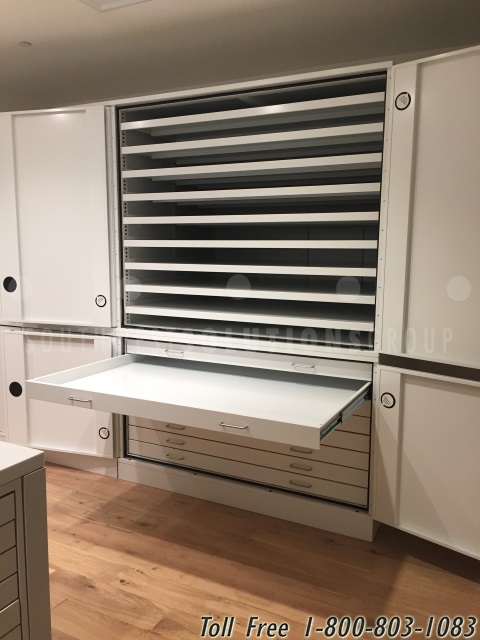
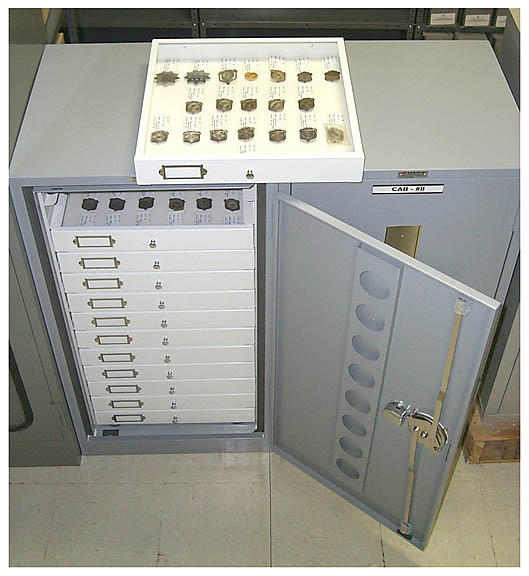

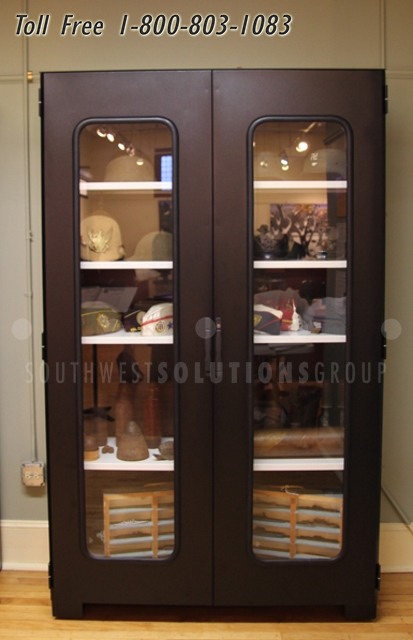
 Museum Overview
Museum Overview Compact Storage
Compact Storage Art Racks
Art Racks Museum Cabinets
Museum Cabinets See All Museum Storage Brochures
See All Museum Storage Brochures




